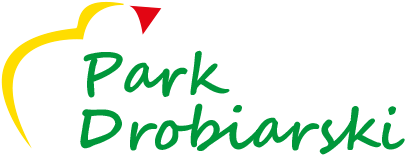After arrival from the reproductive farm, eggs are automatically unloaded on breeding carts and are disinfected again in the disinfection chamber. In the warehouse area they undergo another inspection – assessment for quality, conformable to the company’s internal procedures. Strict selection ensures that only top quality eggs get to the circulation. To provide best conditions of embryo storage, we invested in unique system of automatic breeding tray tilt. Complex hygienisation of the process of storing eggs in the hatchery is of special importance, because before the eggs get to circulation, they are stored from 3 to 5 days in accordance with the technology. Before the circulation, all the eggs are decontaminated for the third time in chambers prepared exclusively for this purpose, which ensures healthy and sterile incubation.
Over the last 13 years the hatchery has been undergoing constant expansion and development. From the initial capacity of 25 million chicks to the present facility, which handles over 90 million one day chicks per annum. From the very beginning the principle of hatchery’s functioning is based on hygienic, one-step incubation of hatching eggs.
MoreHatchery
The whole incubation and hatching process takes place under strict production supervision and only on machines corresponding to the highest international standards. In our hatchery we use single expenditure breeding instruments of a Belgian company Petersime – the world leader in the field of breeding stations and incubation control systems. Breeding instruments are equipped with technology which automatically adapts the climate inside the incubator to the individual needs of the embryo, and the whole hatching system is monitored with the unique EAGLE-EYE program providing live preview of incubation and hatching conditions. Conditions of temperature, humidity, ventilation and hatching eggs’ weight loss are constantly monitored and adapted to the proper development of the chick inside the egg through:
- CO2 control system – carbon dioxide level control during incubation stimulates the process of chick hatching,
- Ovoscan – embryo’s temperature measurement system, adapting the temperature and humidity program to the individual needs of embryos,
- Synchro-Hatch – chick hatching synchronisation system allowing to maximally shorten the time between hatching of the first and the last chicks in the instrument.
The hatching process lasts 21 days, 18 of which is allocated to the incubation period, and the last three to the hatching. After the incubation is complete, eggs are transported from nest boxes to hatching incubators with an ID Projects machine. Eggs undergo fully automated process of lighting and selection, which removes unfertilised eggs or lifeless embryos. Automation involves also following phases of cleaning, disinfection and drying of the breeding boxes.
After the hatching, chicks are automatically transported to the chick selection area, where trained personnel performs the selection. Healthy and only of top quality chicks are passed to the vaccination and loading into transport boxes room, where preservation of parameters complying with birds’ natural habitat has been taken care of. On client’s request, chicks can be vaccinated in the hatching facility against the following infectious diseases:
- Gumboro IBD disease (eliminates the necessity of further vaccination of chickens on the farm),
- Marek’s Disease Virus – MDV (highly infectious viral cancer disease),
- IB (infectious bronchitis),
- ND (newcastle disease),
- REO (reovirus infection),
- SHS (swollen head syndrome) – coccidiosis.
We use vaccinations that come only from renowned producers, meeting individual Clients’ requests.
PROGRAM C.H.I.C.K. – CEVA
Park Drobiarski actively participates in C.H.I.C.K. (Ceva Hatchery Immunisation Control Keys), a special programme, which is to raise vaccination quality in poultry hatching companies. The foundation of these audits organised by Ceva company is numerous tests, measurements and expertise regarding storage, preparing and the course of vaccination process itself. C.H.I.C.K. programme enables precise monitoring of the whole process and constant perfecting of vaccination techniques. All that submits to impressive, nearly one hundred percent effectiveness of spraying and injection vaccinations, which is proven by consecutive audits and certificates granted to our company.
C.H.I.C.K. programme means professional assistance with vaccination, including:
- storing process supervision,
- pvaccination technique improvement,
- vaccination equipment maintenance,
- audit and monitoring,
- expertise and personnel training.
Hatching facility is equipped with one day chicks injection machines as well as spraying vaccination equipment which is built into the production line. Care for the hygiene of the process and efficiency of equipment applied ensures, that there are no post-vaccination complications and that the level of chicks’ security is on the highest level.
Our own specialistic transport for chicks carriage is our next asset. Our transport fleet presently includes 7 vehicles, which undergo periodic service and inspections – not only for technical efficiency, but also for quality.
Loading takes place in a special dock, which allows heating the vehicle right before loading, to ensure full comfort to transported chicks. After the transport to the farm each vehicle is thoroughly cleaned and disinfected in our wash, under strict control of veterinary services.
The fleet of specialistic transport vehicles provides the chicks with optimum transportation conditions. We equipped our vehicles with ultramodern solutions by Heering company, for instance air conditioning and automatic temperature and ventilation level measurement controllers. Owing to such solutions, the driver constantly supervises the livestock in transport, regardless the circumstances. Carbon dioxide measurement adopted in cars makes it easier to precisely adjust the ventilation level, and the GPS-based system of data transmission enables constant control over the transport’s location and assessing parameters of the transported chicks remotely.
